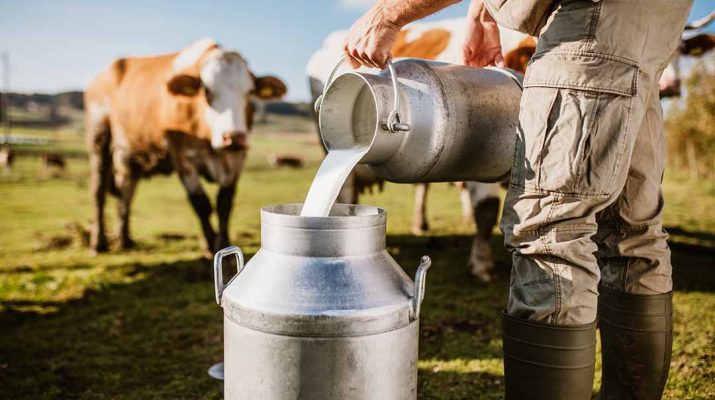By Michelle Slater
Milk prices are at record highs as companies edge towards the $10 per kilo milk solids mark as processors are vying for supply, but some farmers remain wary with rising input costs.
Dairy giants such as Saputo, Fonterra and Bega have hoisted their opening farm gate prices above $9, with new records coming off the back of stiff competition for milk and robust global markets.
However, costs in fertiliser, fuel and grain have gone through the roof amid war in Ukraine and ongoing disruptions associated with COVID -19.
Leongatha South dairy farmer Benjamin Vagg took over his parents’ farm in 2020 and milks 420 cows.
The third generation dairy farmer said he has his eyes set on increasing his herd by another 50.
But the Saputo supplier said although milk prices were up, so was diesel and fertiliser, and he was already locking up spring pastures to save on fodder down the track.
“I’m trying to take a longer term view by expanding my herd. Usually milk prices going up drives expansion, but I don’t think this will drive expansion,” he said.
“Costs are going through the roof, urea is nearly three times what it was and who knows what diesel or what the weather will do, if it comes in too wet in late winter it will be a tough slog.”
United Dairy Farmers Victoria vice-president Mark Billing said it was a “nervous time” for processors as they were either attempting to retain or attract new milk supplies amid global market volatility.
Mr Billing said Australian milk supplies were dropping about 2 per cent each year with other added pressures such as labour shortages, or dairy farms being switched over to beef production.
“It’s that time of year where farm businesses are stepping up to look what’s on offer and farmers are looking at which processors will give the best return, we have a lot of choice now,” Mr Billing said.
“We are in record price territory quite easily, 12 months in, I am getting a $2-a-kilo difference, this is a massive move, we used to think 50 cents was a massive shift, this is unheard of.” Mr Billing said many farmers had been using the past few years to stabilise their businesses from the 2016 milk crisis, where prices hit as low as $1.90 a kilo per milk solid.
He said this latest upswing may allow dairy producers to set themselves up to insure themselves for the next down cycle in the market, “which hopefully won’t be as dramatic as in the past”.
“It’s still positive going forward, but there’s definitely production issues and this is taking the edge off the milk price as a large portion will be swallowed by inputs,” he said.
“Labour availability is a significant issue, you could expand your dairy but it won’t support this investment if you don’t have the labour to support it.”
A 2022 Dairy Australia national survey found profitability has continued to improve, and 82 per cent of farmers were confident about the future of their own businesses.
Dairy Australia industry insights manager John Droppert said the report confirmed that commodities remain strong, driven by a combination of tight supply, robust demand and buoyant soft commodity values.
“This theme is likely to be tempered by an absence of growth in milk production,” Mr Droppert said.
“Nonetheless, robust balance sheets after several profitable years might just mean that the volatility accompanying such giddy numbers is something the Australian dairy industry is well-placed to tackle.”

